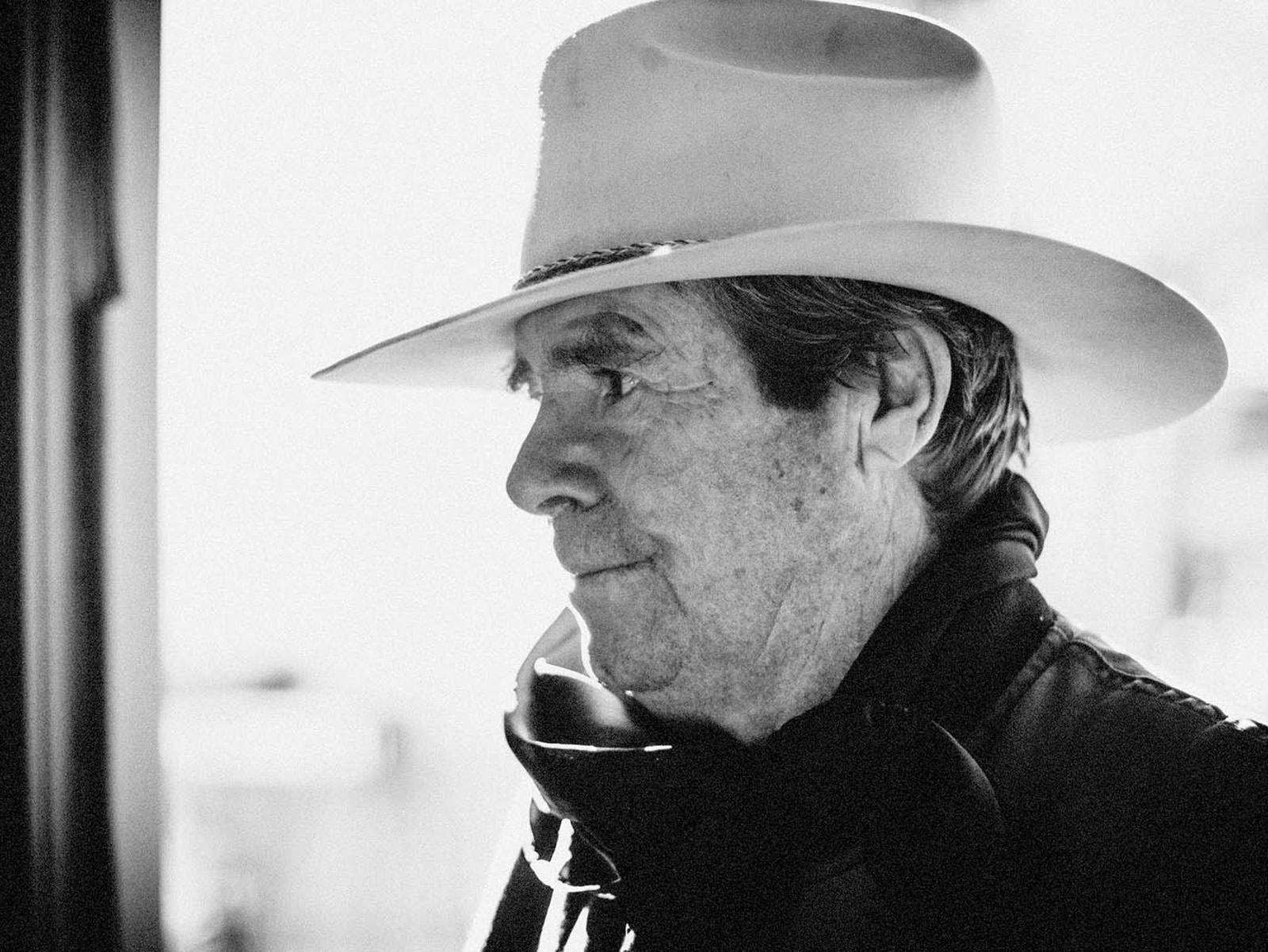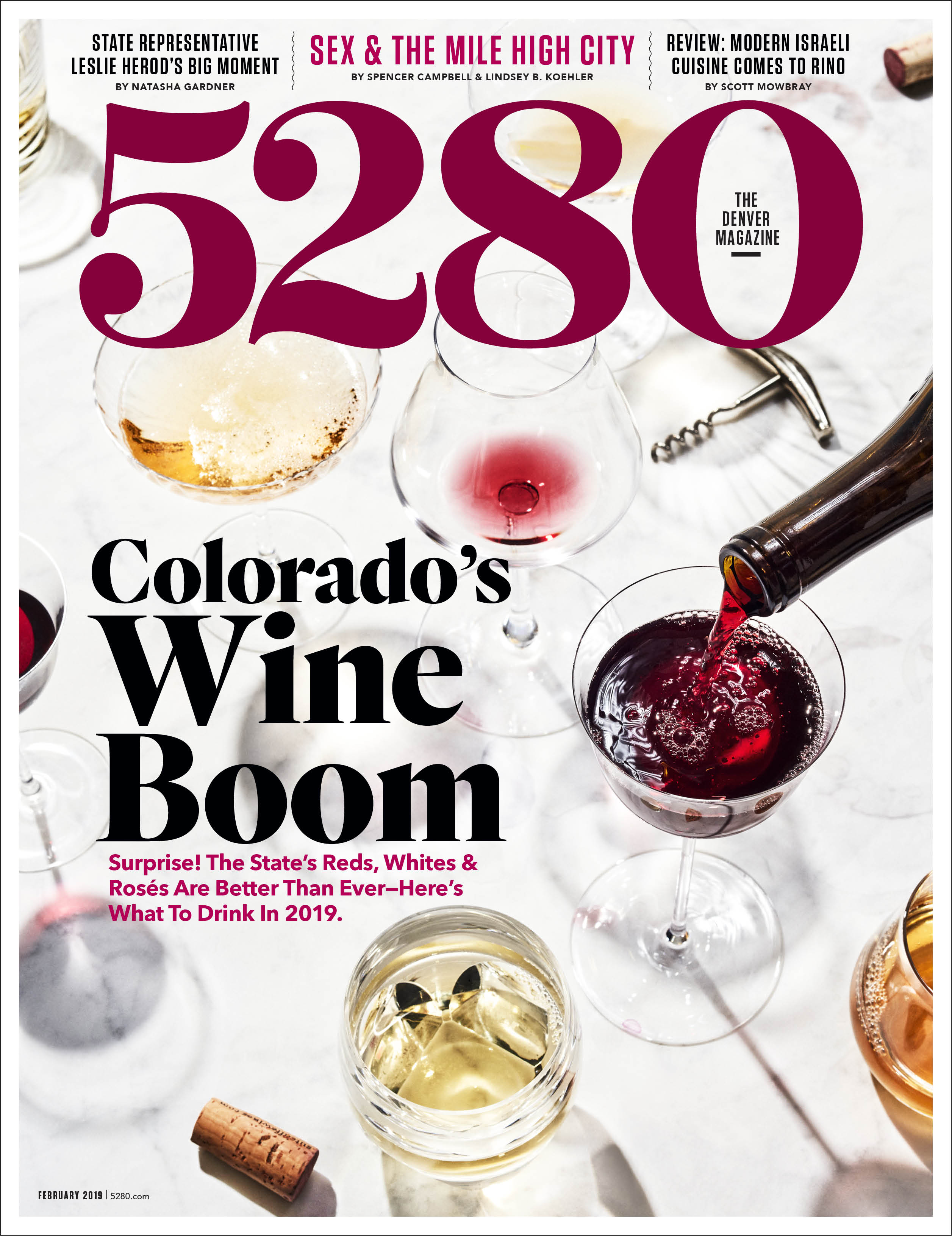The Local newsletter is your free, daily guide to life in Colorado. For locals, by locals.
This story is part of the 5280 Guide to Colorado Wine. Read the full feature here.
Carlson Vineyards
Garrett Portra is leading a storied winery down new and unexpected paths.
Thirty-six-year-old owner-winemaker Garrett Portra’s energy brightens any space he enters—even the noisy, industrial fermenting room in Carlson Vineyards’ 4,000-square-foot Palisade production facility, which sits atop Orchard Mesa. Portra bought the winery from its original owner, Parker Carlson, in 2015, and he’s been digging deeper, so to speak, ever since. Although Portra inherited Carlson’s reputation for award-winning sweet wines—made from Riesling, Gewürztraminer, and Colorado fruits like peaches, cherries, and plums—he’s now branching into bigger (translation: full-bodied, high alcohol by volume) reds and dry wines in all hues.
Part of his motivation is a desire to address personal pet peeves. “I don’t like that people think wine can only be consumed on a special occasion,” Portra says. His answer: a line of nonvintage, nonvarietal, easy-drinking wines dubbed NSFW (Not Safe For Work) that sell for $12 a bottle. Portra has also teamed up with Grand Junction chef-owner Josh Niernberg (Bin 707 Food Bar, Taco Party) to create two food-friendly bottles—a dry Riesling and a Lemberger-Cabernet Franc blend—using local fruit. Look for them under the delightfully trippy High Desert Wine Lab label (designed by Denver agency Consume & Create).

Snowy Peaks Winery
Erik Mohr has been crafting award-winning wines in Estes Park for nearly 15 years.
You’d never know it from a sip of Snowy Peaks Winery’s tropical-fruit-forward Viognier or silky Elevé (a Rhône-style blend of Syrah, Petite Syrah, and Mourvèdre that was chosen for the 2018 Governor’s Cup Collection), but co-owner Erik Mohr only moonlights as a winemaker. Even though he’s produced every drop of Snowy Peaks’ wines since its opening in 2005, Erik continues to work full time as an ecologist while his wife, Candice, runs the winery’s charming Estes Park tasting room.
Perhaps it’s his science background that makes Snowy Peaks’ wines so appealing: Erik uses just enough commercial yeast and sulfur dioxide to maintain clean fermentation and retain the grapes’ delicate flavors and aromas. Erik and Candice source 100 percent Colorado-grown grapes, including Riesling, Traminette, Tempranillo, and cold-hardy Frontenac and Lacross hybrids. “I want ripe grapes with enough acid to produce a fruit-forward wine that’s balanced enough to pair with food,” Erik says. “I try to obtain grapes from the best vineyards in Colorado.”

Red Fox Cellars
The Hamilton family uses old-school methods to create bold Grand Valley AVA wines that are entirely unique.
What do you get when you cross bourbon, tequila, and rye whiskey barrels with wines made from Colorado-grown Chardonnay, Sémillon, Merlot, and Cabernet Franc? Four-year-old Red Fox Cellars’ best sellers, of course. “We make traditional wines like everybody else, and then we make our ‘avant-garde’ style wines,” says owner-winemaker Scott Hamilton, who runs Red Fox in Palisade with his wife, Sherrie, and 30-year-old son, Kyle. “That’s where we experiment.”
Even Red Fox’s straightforward wines have a touch of novelty; consider the sparkling Sémillon Blanc de Blanc that the Hamiltons produced in 2016 using “méthod champenoise,” a traditional French method that includes a secondary fermentation inside the bottle. Or the collaboration between Red Fox and Denver’s Black Project Spontaneous & Wild Ales, which resulted in what they describe as a “respectful but unbound by tradition” Blanc de Noir sparkling wine—dubbed “Mangy”—made with estate-grown Barbera grapes and aged in Black Project barrels. The ale aged in the barrels prior to the wine lent lush, tropical papaya notes to the final fizzy product.

Sutcliffe Vineyards
John Sutcliffe proves that great wines can come from the Four Corners region, too.
English-born John Sutcliffe didn’t set out to establish one of Colorado’s preeminent wineries. When the former restaurateur, polo player, and self-proclaimed cowboy bought his McElmo Canyon property in 1990, he envisioned a sprawling cattle operation; the decision to plant grape vines around the house was purely aesthetic, at the suggestion of his architect. Soon, however, the vision of a full-blown vineyard took hold, and Sutcliffe now has vines snaking across 56 acres. He also sources fruit from two vineyards in Palisade and produces 3,000 to 5,000 cases of wines annually.
The temperate Four Corner region’s hot days and cool nights give Sutcliffe’s award-winning wines—including his subtle, gently oaky 2016 Chardonnay—irresistibly crisp acidity and, as Sutcliffe is fond of saying, “charming noses.” Not one to rest on his vines, Sutcliffe is constantly working on new projects, including his Katrin and Christoph’s Dunton Reserve, a red blend named for Christoph and Katrin Henkel, owners of nearby Dunton Hot Springs.









